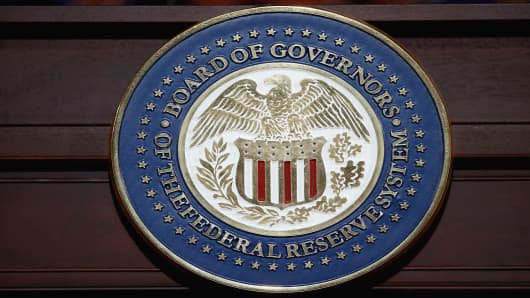While Federal Reserve officials have considered raising interest rates to break the back of rising commodity prices—and could one day use that tool—so far they have concluded it's the wrong medicine for the problem.
Top Fed officials see the rise in commodity prices as coming mostly from emerging market growth. If anyone has monetary policy wrong, if any economies are overheating, it's likely those countries, not the U.S., they believe.
Some officials also contend that the only way the Fed's easy-money policy could be causing inflation is if investors are stockpiling assets, which they see little evidence of.
In futures markets, for every investor who's long, there is one who's short, so increased speculation itself cannot drive up prices. Speculators would have to be taking physical product off the market to actually affect prices, these officials say.
Moreover, some leading officials say, there has been no general rise in prices, which is why they insist that core inflation—which excludes food and energy costs—provides a true picture.
But even if the Fed isn't at fault for rising commodity prices, the question is: Should they do something about it anyway? Not yet, some officials believe.
Here’s the problem: the Fed believes it couldlower commodity prices by tightening its monetary policy and reducing economic growth. The result, however, would be that wages would fall along with prices—and the economy.
So real—or inflation-adjusted—prices wouldn't change at all, these officials believe. This goes along with a view among monetary policy experts that the Fed cannot affect real prices.
The problem for the Fed is that the public likes falling prices. But most people don’t take account for the other side of the ledger: a deflationary environment of falling prices is one where wages are also likely falling as well.
The thinking among some at the Fed, evident in several public speeches, is linked to a 1997 paper by then-professor Ben Bernanke in which he argued—along with two other academics— that the right response of the central bank to higher oil prices is to do nothing.
The paper argues that it's the central bank's reaction to oil price shocks that creates recessions, not the shock itself.
The best test for using the interest rate tool against commodity prices is whether:
- There is a general wage/price spiral
- The rise in commodity prices looks to be permanent
- Inflation expectations get out of control
One gauge of the first measure is unit labor costs, or the cost of labor per some dollar amount of output. This essentially measures wages relative to productivity.
It is only inflationary for wages to rise if workers are not more productive. They have been very productive the past several years and yet wages have been stagnant. In the past two years, unit labor costs have fallen in five of eight quarters, including the most recent one in the fourth quarter of 2010.
So the labor component of production, all in (including productivity) has gotten cheaper, not more expensive. Note that ULC's soared in the 1970s.
One very likely policy is for the Fed to complete the $600 billion bond-buying program known as QE2 and then go on hold for a period while the central bank considers an exit strategy. That means continuing to roll over maturing mortgage-backed and Treasury securities after June.
Replacing the runoff is current policy, so the Fed would have to alter it to make a change and reduce the size of its balance sheet. It would not make much sense to spend months getting the balance sheet up to a certain level and then turning around immediately and reducing it.



